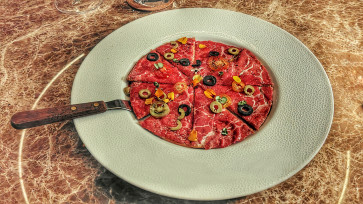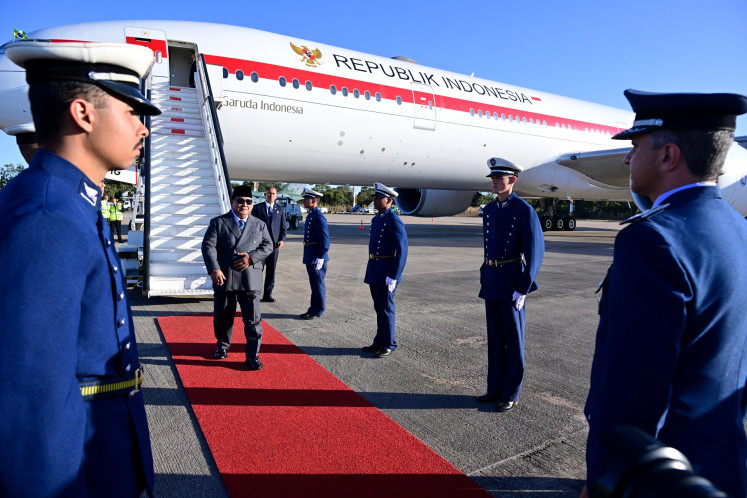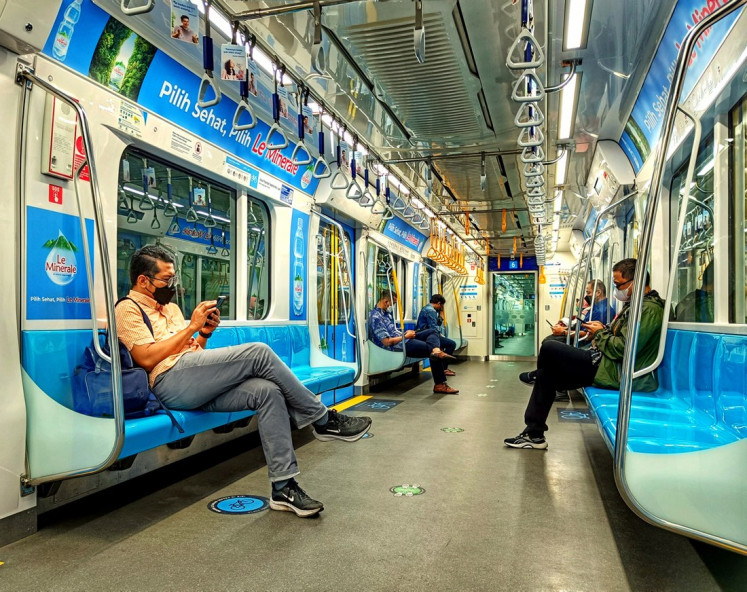Popular Reads
Top Results
Can't find what you're looking for?
View all search resultsPopular Reads
Top Results
Can't find what you're looking for?
View all search resultsCHINA’S GREAT MOSQUE OF XI’AN, A SILK ROAD LEGACY
Thought-provoking: A library called the Unmatched Pavilion is located in the first courtyard of the Huajue Mosque complex
Change text size
Gift Premium Articles
to Anyone
Thought-provoking: A library called the Unmatched Pavilion is located in the first courtyard of the Huajue Mosque complex.
So foreign yet so familiar — that is how I felt when visiting the Great Mosque of Xi’an.
If not for the Sino-Arabic inscription on its gateway, you would think the city’s largest mosque, also known as Huajue Mosque, was a Buddhist temple. Its architectural design is nothing like that of most modern Indonesian or Middle Eastern mosques, with their tall minarets and giant domes.
If you do not speak Chinese and are traveling alone, you could easily miss it. One of the reasons is that the mosque, according to archnet.org, has a layout of an ancient Buddhist temple with its successive courtyards, pagodas and pavilions.
The only difference is that the 12,000-square-meter complex is on an east-west axis facing Mecca and that the pagodas and pavilions are adorned with Islamic art and functionality.
One pagoda, called Shengxinlou or the Examiner of the Heart Tower, for example, serves as a minaret where the call to prayer used to be made.
Like older Indonesian mosques, Huajue Mosque is a testament of how early Muslims managed to immerse the faith into a local cultural setting. There is no denying its historical significance for China and also the Muslim world.
The mosque, which was declared a Major Historical and Cultural Site in 1988, is a legacy of the Silk Road with Xi’an, the old capital of a unified China, as its center.
It is believed the mosque was built in the early decades of Islam, although other historical sources say it was built in 742 during the Tang Dynasty and was reconstructed and expanded in 1392 under the Ming Dynasty.
Call to pray: Muslims prepare for Friday prayers at the Great Mosque of Xi’an.The mosque was built for the rising number of Arab merchants and Persian travelers who decided to reside in Xi’an, then called Chang’an, and marry local Han people, creating one of the first Muslim communities in China.
It is thought the famous 15th century Chinese admiral Zheng He, who made a voyage to Southeast Asia and reportedly played a part in the spreading of Islam in Indonesia, was also involved in the construction of the mosque complex.
Despite its uncharacteristic architecture, the mosque, particularly the prayer hall, looks oddly familiar to Indonesian Muslims. If you go all the way through the western part of the mosque complex you will find the unassumingly elegant prayer hall, the interior walls of which are adorned with Quranic inscriptions.
The prayer hall is what most Indonesian Muslims would call a masjid (mosque). There, they would easily find the ease and serenity of old mosques in Java, with its wooden pillars and Quranic text carved on its wooden panels.
The mosque got it moniker because it is located near Huajue Lane, which is a popular destination for both Muslim and non-Muslim tourists. Also known as Muslim street, there you can find restaurants owned and staffed by Chinese Muslims offering, of course, halal Chinese food and drinks.
At the end of the lane near the Xi’an city wall, you will find an alley full of small shops that leads you to the mosque. You know you have reached the mosque complex when you find a small shop selling Muslim caps near a red gate.
As if confirming a connection between Indonesian and Chinese Muslims, you will also find that some, if not most, of the caps are made in Indonesia. (ste)
— Photos courtesy of M. Nurul Hudha
__________
The Chinese Embassy in Jakarta invited a group of social media influencers and The Jakarta Post to visit Beijing, Xi’an and Shanghai from Sept. 2 to Sept. 8. The trip was organized by Tenggara Strategics.











